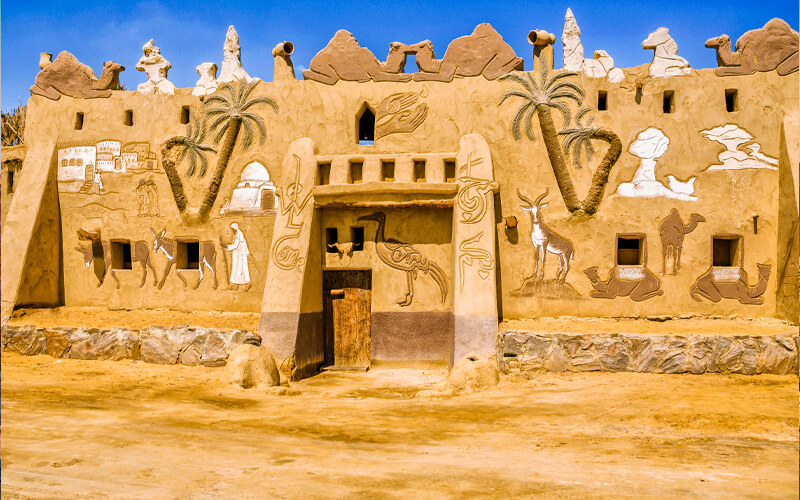
The history of Badr is kept alive at a museum that may be found in Farafra.
A community named Farafra is located in the middle of an oasis, extends a warm welcome to curious tourists, and gives them a chance to gain knowledge about ancient Egyptian traditions and rituals that stretch back hundreds or even thousands of years.
Everyone interested in learning more about this historical period should make an effort to visit the Badr’s Heritage Museum in Farafra. This Museum is an essential need. If you do this, you can be assured that by the time every individual who comes to the museum leaves, they will have a deeper comprehension of what was occurring throughout that period of historical time and what role it had in the world’s development.
Location:
The nearby Farafra Egypt and Badr’s Heritage Museum are readily accessible from the White Desert via a short car journey, making them popular locations for day excursions from the desert. Both of these museums are located in the same complex.
The Museum is located around three kilometers to the east of Farafra. It includes a structure that looks like a giant sandcastle and is created similarly to the Museum. As a direct result of the construction of this structure, the Museum now has a unique appearance and distinct identity.
It is possible to see and go back in time in the following ways:
Mr. Badr Abdel-Studio Moghni has decided to make Farafra Oasis his permanent home. He is a native of Oasis and a self-taught artist who can portray the town’s soul via sculpture, oil paintings, and watercolors. His mediums of choice include oil paintings and watercolors. The two materials that he enjoys working with the most are oils and watercolors.
Alongside an extensive assortment of local antiques and relics, the hobbies and interests of Farafra were shown at the Museum, which he conceptualized, designed, and constructed all on his own. The statues were fashioned out of clay discovered in the local region. Furthermore shown are artifacts and items from the area immediately around the site.
In addition, he is a rich source of information about the Oasis’s tradition and way of life.
The local sandstone, which Badr carves into specific shapes and qualities, serves as the foundation for some of the most outstanding examples of his work and is one of the materials he works with.




